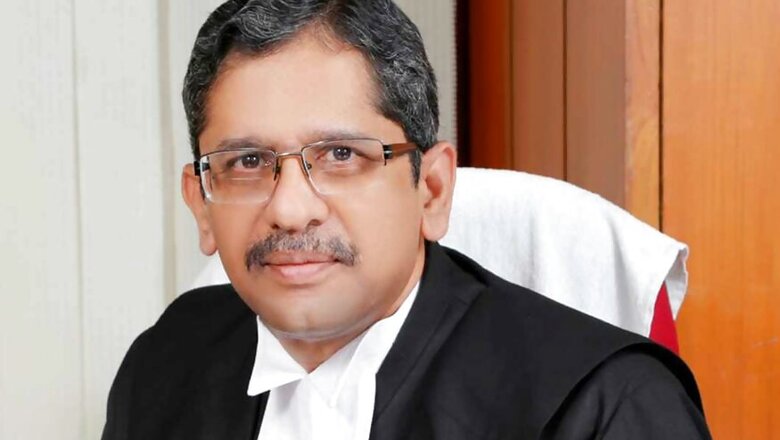
views
New Delhi: Right to information should not be allowed to be used as a "tool of surveillance" to scuttle effective functioning of the judiciary and the institution needs to be protected from the attempts to breach its independence, Justice NV Ramana of the Supreme Court said on Wednesday.
Justice Ramana, who was part of a 5-judge Constitution bench which held that office of the Chief Justice of India is a public authority and falls within the ambit of the Right to Information (RTI) Act, said the "whole bulwark" of preserving the Constitution is trusted upon the judiciary when other branches have not been able to do so.
Writing a separate but concurring verdict, he said there needs to be a balance between the three "equally important concepts" of transparency, judicial independence and the RTI Act.
"As a shield, the judicial independence is the basis with which judiciary has maintained its trust reposed by the citizens. In light of the same, the judiciary needs to be protected from attempts to breach its independence," he said.
"Such interference requires calibration of appropriate amount of transparency in consonance with judicial independence," Justice Ramana said in his 29-page verdict.
He said it must be kept in mind that transparency cannot be allowed to run to its absolute considering the fact that efficiency is equally important principle to be taken into fold.
"We may note that right to information should not be allowed to be used as a tool of surveillance to scuttle effective functioning of judiciary," Justice Ramana said.
He said the case concerns the balance which is required between two important fundamental rights -- right to information and right to privacy.
"Often these two rights are seen as conflicting, however, we need to reiterate that both rights are two faces of the same coin. There is no requirement to see the two facets of the right in a manner to further the conflict, what is herein required is to provide balancing formula which can be easily made applicable to individual cases," he said.
"In view of the same, right to information can squarely said to be a corollary to the right to speech and expression," he said.
Referring to the provisions of the RTI Act, he said that exemptions under the law are contained under section 8 and there is no doubt that exemption clauses need to be construed strictly.
Justice Ramana said the purport of section 8(1)(j) of the RTI Act is to balance privacy with public interest and under the provision, a two steps test could be identified -- whether there is a reasonable expectation of privacy and whether on an ultimate balancing analysis, does privacy give way to freedom of expression?
"We should acknowledge that these two tests are very difficult to be kept separate analytically," he said.
He said the first step for the adjudicating authority is to ascertain whether the information is private and whether the information relating to the concerned party has a reasonable expectation of privacy.
"In certain cases we may conclude that there could be certain informations which are inherently private and are presumptively protected under the privacy rights," he said, adding, "These informations include gender, age and sexual preferences etc."
Regarding the second step, he said after ascertaining whether the information is private or not, a judge is required to adopt a balancing test to note whether the public interest justifies discloser of such information under Section 8(1)(j) of the RTI Act.
"The right to information and right to privacy are at an equal footing," he said, adding that there are "American cases, which have taken the view that the freedom of speech and expression trumps all other rights in every case. However, in India we cannot accord any such priority to the rights".
Referring to the separate concepts of 'interest of the public' and 'something in the public interest', he said, "the material distinction between the aforesaid concepts concern those matters which affect political, moral and material welfare of the public need to be distinguished from those for public entertainment, curiosity or amusement."
Justice Ramana said "non-exhaustive considerations", including nature and content of information, consequences of non-disclosure, dangers and benefits to public, public and private interests, freedom of expression and proportionality, were needed to be looked at while assessing 'public interest' under Section 8 of the RTI Act.




















Comments
0 comment